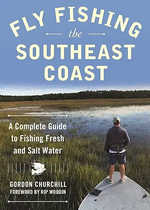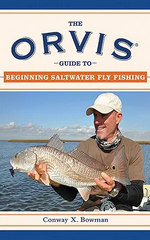On several occasions we have talked about the Roll Cast. So, here we go! Hang on.
If you do much reading or YouTube watching, you will understand that there is only one person who really knows how to make a good roll cast. The problem is that one person is the very one whose book you are reading or whose YouTube you are watching at that very moment. Egads, this is going to be tough. But now you are reading the work of one person who really does know the only way to do a roll cast- in my dreams.
But allow me to do a bit of summarizing and demythologizing.
Why do we need a roll cast? The simple reason is that some streams have no room for decent back casts. Another reason is that there are times you want to get back to the spot where you just had a strike or a follow. Or you want to change direction (not necessarily the best way to change direction, but you can use the roll cast for that). Or simply because it’s a cool cast.
The main point of it all is that it is a compact cast for short (usually under 40’) casts. It operates on the same basic principle as a regular cast in that it depends upon weight to bend the rod to be able to make the forward cast (remember, there is no back cast). But the weight is in part the weight of the line hanging off the end of the rod and the rest comes from the surface tension of the water on the small amount of the fly line that is still in the water.
Now that you are hopelessly lost, let me try drawing a word picture. One caveat, the last time I did this was in high school when we had to draw a word picture of a bicycle so that anyone (in this case our English teacher- a Harvard grad) could draw something that looked like a bicycle based on what we wrote. I did a pretty good job except I forgot tosay how the front wheel was attached to the rest. Oh well. Here goes.
As you prepare to make a roll cast, strip the line in as normal- at least to the 50’ double mark- likely a bit more. As you get close, raise the rod up with a slight backward slant. As the weighted line seeks to fall straight to the water it will keep pulling the fly, leader, and remaining line closer to you. With the line falling from the elevated rod tip, you get what sort of looking like a capital D. As the fly slows down and almost stops, make a normal forward cast, seeing if you can execute a haul (I haven’t gotten to that point yet). The further back you can point the rod tip without getting into the bushes the better since it adds more weight to the rod tip.
It’s at this point that many people really mess up by trying to power the rod forward. Guess what happens! The line piles up in coils in front of you.
But, you know the mistake made. Instead of trying to power the rod forward, move it slowly, accelerating as you go to a Hurry Up and Stop. Do not force the cast so the rod tip is pointing at the water because that is where the fly will go. Make it a normal forward cast. Easier said than done. But it takes practice.
And make sure you practice on water. Trying a roll cast on grass (or gravel) will not work because grass and gravel don’t provide any surface tension to help bend the rod enough so it will shoot the line. You can always go on YouTube and find the one other person who understands the roll cast. Good luck. .
Don’t forget to check out the resources of Fly Fishers International at www.flyfishersinternational.org.
Also, Google this and other topics of interest and go to YouTube for seemingly endless videos.



